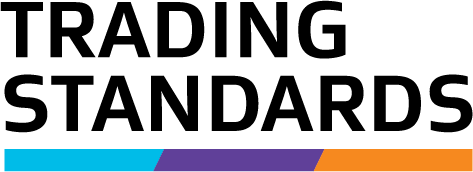Cured or preserved fish
Procedure to establish the net weight of prepackaged cured or preserved fish products.
Labelling and testing requirement
All packaged foods must be marked and sold with a stated net quantity on the package. All packaging must be excluded from the quantity statement.
If any fluid or other component is in the packaged food and is identified for consumption, such as in the name, description or instructions, it may be included in the net quantity statement.
If any fluid or other component is not identified for consumption or is in a state that prevents its consumption, such as fluid contained within absorbent packing materials or soaker pads, it should not be included in the net quantity statement.
For more information see:
NOTE
Testing must be conducted on packages in the same condition that they are or intended to be when on sale at retail or the storage recommendation made by the packer or importer on the package label.
Test procedure to establish net weight
The following procedure has been developed to help Trading Standards Officers, packers or importers determine whether the stated net weight on prepackaged cured or preserved fish products is correct.
Procedure
Required equipment
You’ll need the following equipment for the testing procedure:
- Suitable weighing instrument
- Tray to place fish on
- Scissors
- Palette knife or similar blunt bladed instrument
- Latex gloves
- Calculator
- Stopwatch
Step 1
- Record the product name, batch number/ID and stated net weight of product.
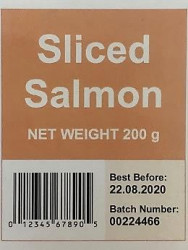
Step 2
- Place empty tray on weighing instrument and push the 'Tare' button.
- Remove tray.
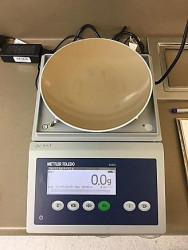
Step 3
- Put on latex gloves and use scissors to open product packaging.
- Remove everything identified for consumption and place on the tray, ensuring any materials identified not for consumption remain with the packaging.
- To minimise handling, use a palette knife to remove the fish from the packaging.
- To include any fluid that is identified for consumption, allow for a 20 second drainage time using the stopwatch.
- Place tray on weighing instrument and record the actual net weight.
- Remove tray and fish from weighing instrument.
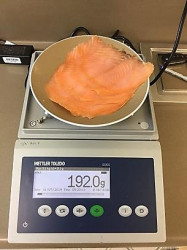
Step 4
- Zero the weighing instrument.
- Place packaging, including any materials identified not for consumption, on the weighing instrument.
- Record the packaging weight.
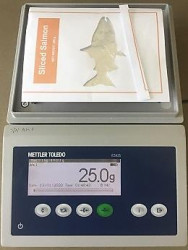
Step 5
- Calculate any error by subtracting the actual net weight of fish from the stated net weight.
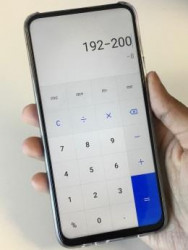
Example of recording quantity checks for packers or importers
| Product Name | Batch Number / ID | Stated Net Weight (g) | Actual Net Weight (g) | Error (g) | Packing Material Weight (g) | Pass / Fail |
|---|---|---|---|---|---|---|
| Sliced Salmon | 00112233 | 100 | 105.0 | 5 | 19.0 | Pass |
| Mackerel Fillet | 00224466 | 200 | 192.0 | - 8 | 25.0 | Fail |
Penalties for breaching the weights and measures legislation
Selling short quantity packaged goods
It's an offence if the weight, measure or number of goods in the package is less than that stated on the package or label.
If your goods are found by a Trading Standards Officer to be short of their stated net quantity, you may be subject to an enforcement action under Section 16A of the Weights and Measures Act 1987.
For more information see:
- Offences and associated fees and fines
- What to do about short quantity packages
- Weights and Measure Act 1987 — Section 16A, Offence to supply weight, measure, or number not in accordance with stated quantity(external link)
Selling packaged goods not marked as prescribed
It’s an offence if a packaged good is not marked as prescribed.
If your goods are determined by a Trading Standards Officer to not meet the marking requirements, you may be subject to an enforcement action under Regulation 80 of the Weights and Measures Regulations 1999.
For more information see:
- Offences and associated fees and fines
- Food quantity labelling requirements and exemptions
- Weights and Measures Regulations 1999 — Regulation 80, Offence to sell or offer to sell or expose for sale any goods or packaged food not marked as prescribed(external link)
